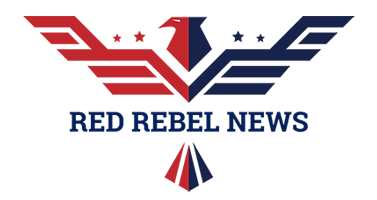Trump Pushes NATO Leaders—Issues Game Changing Request

Fresh off a ceasefire between Iran and Israel, President Donald Trump is now turning his focus to Europe—and he’s not wasting time. Landing in The Hague for a high-stakes NATO summit, Trump is making it clear that his vision of global security starts with bold action, not bureaucracy.
Trump’s presence marks his first NATO appearance since 2019, and the atmosphere couldn’t be more charged. The Biden era’s multilateral mush has given way to Trump’s unapologetic “peace through strength” playbook—and world leaders are scrambling to adapt. At the center of the summit: a proposed commitment that all NATO nations spend at least 5% of their GDP on defense.
That’s more than double the previous 2% goal, which many NATO countries struggled to meet even before the pandemic. But Trump isn’t budging. As Politico reported, the president is expected to spend fewer than 24 hours on the ground. It’s a fly-in, fly-out mission to extract real commitments—and he’s got leverage.
Why? Because Trump just reminded the world what American power can do. The recent joint U.S.-Israeli strike on Iran’s nuclear sites didn’t just devastate Tehran’s uranium enrichment program—it sent a message to every adversary watching: America’s back, and Trump’s running the show.
Now he’s demanding that NATO get serious. And despite early pushback, Trump may have a powerful ally in Secretary-General Mark Rutte, who has emerged as one of Trump’s most vocal supporters inside the alliance. Private messages between the two, reportedly leaked by Trump himself, suggest close cooperation—and a shared interest in restoring NATO’s military backbone.
Critics are already screaming that 5% is unrealistic, but Trump’s defenders argue it’s long overdue. After decades of U.S. taxpayers bearing the burden of collective defense, the Trump doctrine is simple: Pay up or step aside.
The shift couldn’t come at a more critical moment. With Europe’s eastern flank facing increasing pressure from Russia and the Middle East still smoldering, defense capabilities are no longer optional—they’re essential. Trump knows this, and he’s daring the global elite to match his seriousness.
Beyond spending, the summit is also expected to address NATO’s readiness posture, military modernization, and the alliance’s posture toward China. But it’s the Trump-driven defense demand that’s dominating the agenda—and reshaping the conversation.
This is Trump’s strategy in action: short, focused engagements with maximum impact. No endless speeches. No diplomatic niceties. Just results.
And for once, it looks like the rest of the world might follow his lead. With leaders like Spanish Prime Minister Pedro Sánchez and German Chancellor Friedrich Merz reportedly softening their resistance, the 5% proposal may be gaining traction. What seemed impossible during past administrations is now on the table—because Trump’s back in charge.
At home, the move is playing well with voters who remember Trump’s 2016 pledge to make allies “pay their fair share.” Abroad, it’s a test of who’s serious about standing up to threats—and who’s hiding behind America’s might.
As the summit unfolds, one thing is clear: Trump’s approach isn’t about symbolism. It’s about substance. And The Hague may be the place where NATO finally catches up to the new world order he’s been building.

